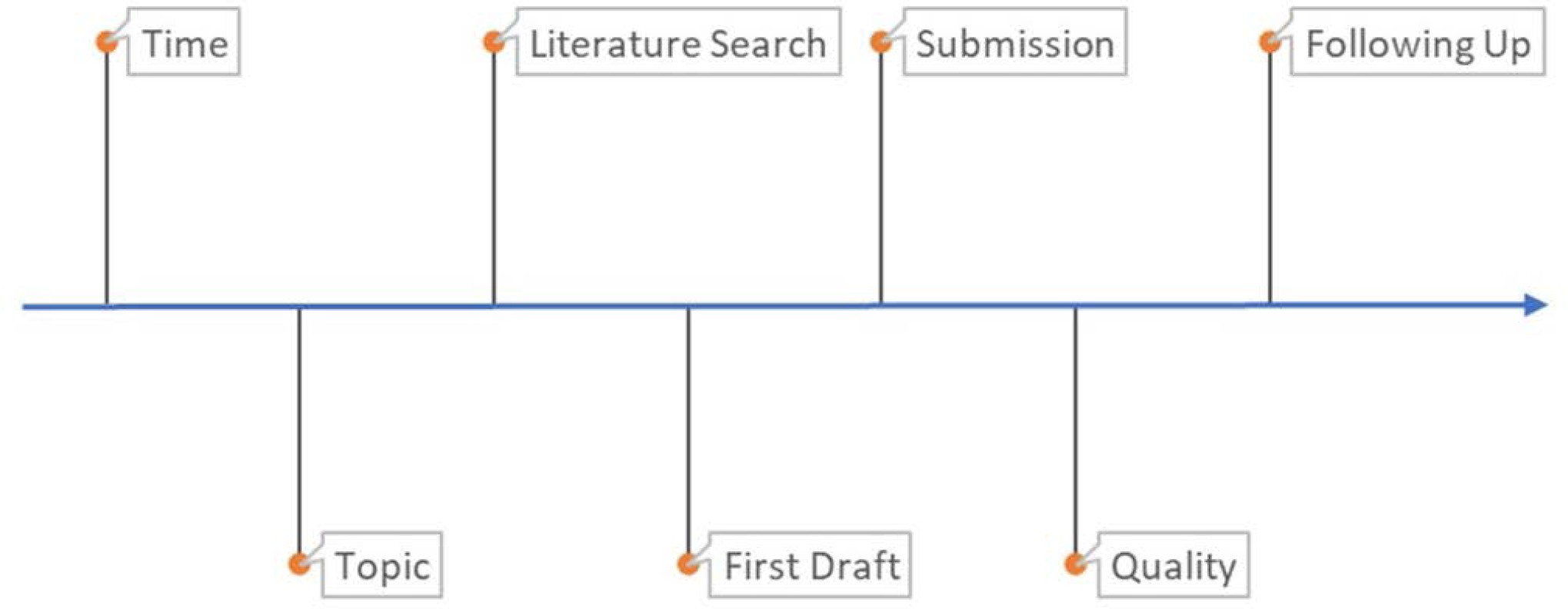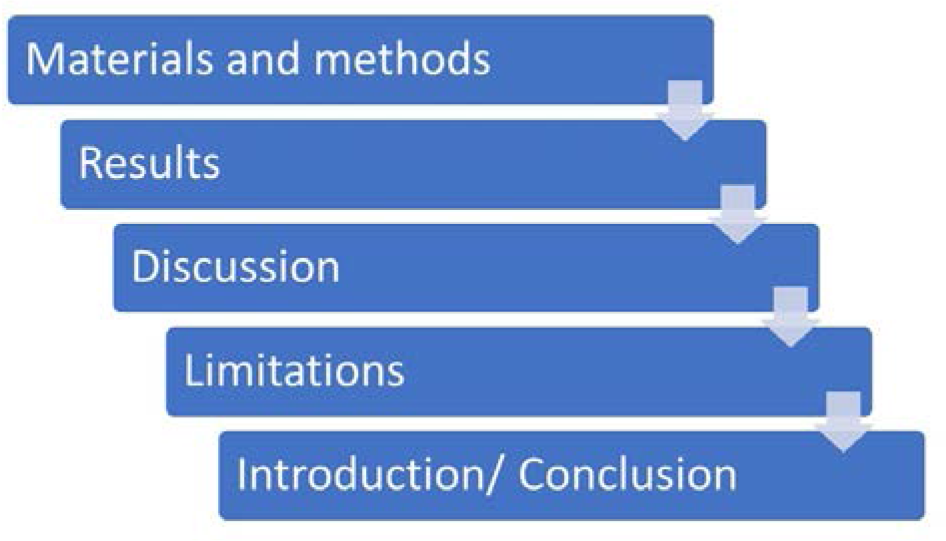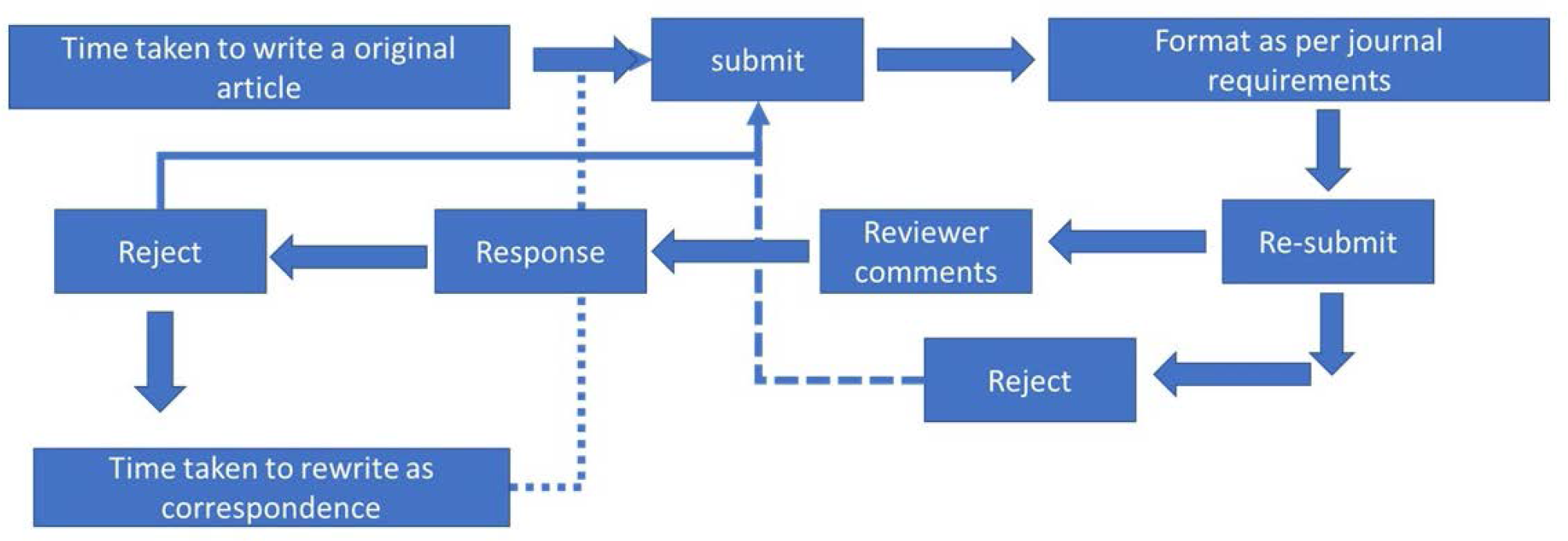Translate this page into:
The Odyssey of publications during residency–the much needed yet challenging journey

*Corresponding author: Professor Sunil Dogra, Department of Dermatology, Post Graduate Institute of Medical Education and Research, Chandigarh, India. sundogra@hotmail.com
-
Received: ,
Accepted: ,
How to cite this article: Narayan RV, Dogra S. The Odyssey of publications during residency–the much needed yet challenging journey. CosmoDerma 2022;2:11.
Abstract
There is no greater joy than contributing back to the field that one chooses to specialize in. This noble feat of scientific publication can, however, be a daunting task for those who are in the nascent period of their residency. They need to strike that fine balance between academic learning, patient care, and publication without burning themselves out. This exercise is best capitalized in that window period of the 2nd year of residency. They will thus be updated, forming long-term memory. The topic chosen should belong to the area of their interest, but at the same time be current and timely. They need to master electronic data base search, learning the correct use of operators and filters. An extra edge can be gained with the help of reference managers, which can summarize, retrieve, and organize all relevant literature. Writer’s block can be overcome by writing the easiest part of the paper first and using a pre-existing publication as a template. The lingo and flow ideas must be academic, scientific, and captivating, yet be simple and comprehensible. A right platform to showcase the research must be found, evading predatory journals. Effort and creativity must go hand in hand to make the article captivating. Residents must be prepared for revisions and gracefully respond. The process is simple and a lot will be learnt along the way.
Keywords
Publications
Residency
Challenges
There is no greater feat than contributing back to the field that we immerse ourselves in. Residency is that wonderful period wherein you morph from being Jack of all trades to the would-be masters in the subject of your interest. However, alas crawling as a babbling jejune resident into the bustling world of scientific publishing among giants can be quite a daunting task.[1] Broadly, you may divide them into seven challenges that must be overcome [Figure 1].

- The seven challenges to be overcome in the voyage of publication.
CHALLENGE 1: TIME
The pattern of postgraduate teaching is a world apart from one, you are used to in medical school. The most of the time is spent in learning by doing and from patients.[2] Dedicated time needs to be chalked out in our bustling schedule to build up our basics and master theoretical knowledge. Embarking on a journey of publication, without any prior footing, and juggling with academics can seem stressful. The trick of the trade is to find that sweet spot, avoiding a burn out [Figure 2]. Remember that all years of your residency are not created equal [Figure 3]. You will be hitting two birds with one stone by maximizing your effort in publication in that window you get in your 2nd year. Confucius got it right when he said “I hear and I forget. I see and I remember. I do and I understand.” You tend to remember and understand something better when you do it and write it yourself. The long-term memory that you form by writing articles in your 2nd year will help you in your exams in the 3rd year.[3] Furthermore, doing literature search for writing a paper is the best way to review the recent advances. This way you can guilt free excel in academics, yet have some hands on in publishing. You can just spend a few hours on weekends in your final year, to keep in touch with the process of scientific writing.

- Triangle of balance showing perceived trade-off between academics and publications.

- Suggested distribution of effort during different years of residency.
CHALLENGE 2: TOPIC
In the early years, you stare emptily into the canvas, lacking inspiration. You tend to give up thinking that everything that can be discovered has already been done so. When this happens, you need to forget your role as an author.[4] Plunge yourself in the topic that interests you, and identify areas that you find curious or odd. Remember you are not trying to re-invent the wheel but improve it, all ideas have an inspiration behind them. With this mindset, you will develop a better understanding, deeper liking of your topic without the feeling of exhaustion. You would not be starting from scratch every time and will be building steppingstones for the future research.
The other extreme is a desire to extensively establish yourself with publications that you wish to write about everything that you see. In such instances, you need to ask yourself, if the topic is timely, compelling and having an audience. For example, in the present time, it would make more sense to write about COVID than Efalizumab. As a quick tip, you can use the most trending article search on PubMed to give your ideas a much-needed spark. Then, you need to ask yourself if the effort is original and justified. How is this publication of yours going to make an impact in the lives of people affected by the disease or those managing it? Take guidance of your trusted friends, seniors, mentor, and co-authors whether a project is worth doing. A simple acid test to identify whether your article is captivating enough would be to ask yourself whether you would be willing to pay to read your own article.
CHALLENGE 3: LITERATURE SEARCH
The next hurdle that you need to surmount would be doing a through literature search. You need to transition from searching on Google to doing so in PubMed and Google Scholar.[5] Learn the correct usage of Boolean operators/connecting words such as “OR,” “AND,” and “NOT.” In that effect, you need to remember that PubMed like you, reads from left to right and operators when enclosed by parenthesis have jurisdiction only within them.
Another challenge is sifting through voluminous amounts of the literature. Remember the ladder of evidence-based medicine and the year in which the literature was published. Electronic data bases such as PubMed can sort studies as per their date of publication and allows for the application of filters based on the type of study. Include those studies which are of good quality and are recent.
Remembering and comparing results can be a daunting task, so it helps to jot down the salient features in the form of a summary table. A reference manager can help you sort, categorize, and organize all your references in one place. Few like Endnote come with add-in in both your browsers so that you can store your review of the literature at the click of a button. They also have the added advantage of displaying the abstract and option to attach the full text of your selected article.[6]
Universities often have tie ups with leading journals and provide institutional access to full text articles.[7] The same can also be downloaded at times from research gate. This website may also be used to contact authors for their manuscript and for unpublished details of their study.
CHALLENGE 4: FIRST DRAFT
You have the idea in hand but find yourself tongue tied. You relentlessly grasp in vain for those ever so perfect words to do justice to your idea. Remember Newton’s first law, just start writing, things will automatically follow.[8] A tip would be to write the easiest part, the one that requires the least amount of creativity first [Figure 4]. In addition, you can stand on the shoulder of giants. Use a template of already published literature and strike out the words that do not fit with your study and insert the ones that do. Perfection is in imperfection and resists temptation to edit the first draft as you write.

- Ascending order of creativity required.
Remember that it is not a vocabulary contest, keep the language academic yet simple. Avoid the use of superfluous adjectives and absolute statements. Your text must be confident and backed by scientific literature, yet not be arrogant.[9]
CHALLENGE 5: SUBMISSION
It is a Cinderella moment when your article finds the right journal willing to showcase it.[10] Remember not to be dissuaded by the impact factor alone. Always check for the authenticity of a journal, and do not get lured by predatory ones. Journals that ask you to mail your manuscript to them, immediately accepting your article on submission, spamming your email to publish with them and having a sketchy article processing charges are to viewed with suspicion.[11]
That being said, for the journals that are authentic, read the scope of the journal before you submit there. Each journal specializes in a particular field, be it in molecular pathogenesis, diagnostic imaging or therapeutic to name a few. Give due consideration to see which shoe fits best. For journals having the same scope, consider the impact factor, time to response, and rejection rate.
CHALLENGE 6: QUALITY
Next step is to work on the icing. Transform your article such that editors fight to showcase in their journal. Images speak more than the proverbial thousand words and this is one domain that many articles fall short on.
In a bustling outpatient department, it can be challenging to take clinical photographs with adequate lighting, minimal patient clothing, green background, and proper positioning. You need put in a little more effort and get creative. Remember the goal is to remove any distracting object so that the picture speaks for itself.[12] Use a wall or a uniformly painted door as a background and remove distracting ornaments that the patient may be wearing. Although natural light is ideal, a fluorescent tube light lighting up the scene is better than one shot in the dark. You can create make shift lighting by shining two torches at 45° to the subject of interest.
Remember to go the extra mile. Be it dermoscopy, Wood’s lamp examination or a starch iodine test if there is an additional test that can be done to confirm or refute a diagnosis, you must do so and photograph the same. This will not only improve the quality of your paper, but also help those who read your article to recognize what a positive or negative test looks like.
Once you get into the groove of publishing, spending a little time on organizing your photographs and revisions can save a lot of frustration in retrieval. Take at-least two photographs from a single view point and make a folder for each patient. Cameras usually save the date of the image in the file name as they are shot. Apps such as Google photos make the organization process easier.[13]
CHALLENGE 7: FOLLOWING UP
Remember that submission of your manuscript is just the beginning, and the journey is similar to the story of the hare and the tortoise. Do not take on more projects than you can chew and give yourself some buffer time for revisions and rejections [Figure 5].

- Potential areas that consume time during the publication process.
Everyone has a right to their opinion and this makes the paper more colorful. Acknowledge the opinion of reviewers, then either adopt them gracefully or politely refuse. In the latter situation, respectfully give an explanation as to why you disagree with them.[14] Remember to use the “save-as” function when you are saving different revisions and versions of your manuscript.
Most importantly, do not fear or give up if your paper gets rejected. If your work is genuine and you have followed the principles highlighted above, it will get published one day. Remember that the best authors are those who have embraced their rejections and have used them as stepping stones for success.[15]
Publishing in residency is going to help you to develop research methodology, write your thesis, express yourself, and refine your art and learning. The process is simple, take one step at a time. You will learn along the way, just get started.
Declaration of patient consent
Patient’s consent not required as there are no patients in this study.
Financial support and sponsorship
Nil.
Conflicts of interest
There are no conflicts of interest.
References
- Writing a strong scientific paper in medicine and the biomedical sciences: A checklist and recommendations for early career researchers. Biol Futur. 2021;72:395-407.
- [CrossRef] [PubMed] [Google Scholar]
- Residency training in India: Time for a course correction. Indian J Ophthalmol. 2018;66:743-4.
- [CrossRef] [PubMed] [Google Scholar]
- Encouraging medical students to do research and write papers. CMAJ. 2007;176:1719-21.
- [CrossRef] [PubMed] [Google Scholar]
- Unsuccessful treatments of “writer's block”: A meta-analysis. Psychol Rep. 2014;115:276-8.
- [CrossRef] [PubMed] [Google Scholar]
- Making PubMed searching simple: Learning to retrieve medical literature through interactive problem solving. Oncologist. 2006;11:243-51.
- [CrossRef] [PubMed] [Google Scholar]
- Reference managers that support collaborative research: Dreaming of the perfect fit. Med Ref Serv Q. 2018;37:219-33.
- [CrossRef] [PubMed] [Google Scholar]
- The structural and content aspects of abstracts versus bodies of full text journal articles are different. BMC Bioinformatics. 2010;11:492.
- [CrossRef] [PubMed] [Google Scholar]
- Tips on how to write a paper. J Am Acad Dermatol. 2008;59:1064-9.
- [CrossRef] [PubMed] [Google Scholar]
- Developing the “write” skills for publishing. Nutr Clin Pract. 2013;28:153-7.
- [CrossRef] [PubMed] [Google Scholar]
- Writing for publication: Ensuring you find the right audience for your paper. Health Info Libr J. 2010;27:259-61.
- [CrossRef] [PubMed] [Google Scholar]
- Potential predatory and legitimate biomedical journals: can you tell the difference? A cross-sectional comparison. BMC Med. 2017;15:28.
- [CrossRef] [PubMed] [Google Scholar]
- Clinical photography in skin of colour: Tips and best practices. Br J Dermatol. 2021;184:1177-9.
- [CrossRef] [PubMed] [Google Scholar]
- Clinical photography of skin lesions: Professional and legal considerations in primary care. Aust J Gen Pract. 2019;48:492-4.
- [CrossRef] [PubMed] [Google Scholar]
- Responding to reviewers' comments as part of writing for publication. Nurse Res. 2011;18:23-7.
- [CrossRef] [PubMed] [Google Scholar]
- Rejection of rejection: a novel approach to overcoming barriers to publication. BMJ. 2015;351:h6326.
- [CrossRef] [PubMed] [Google Scholar]






